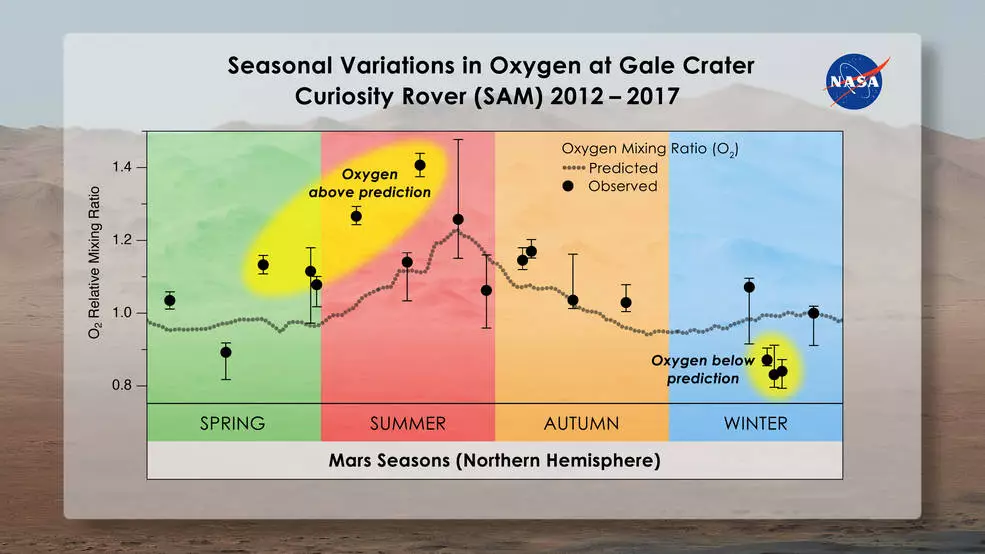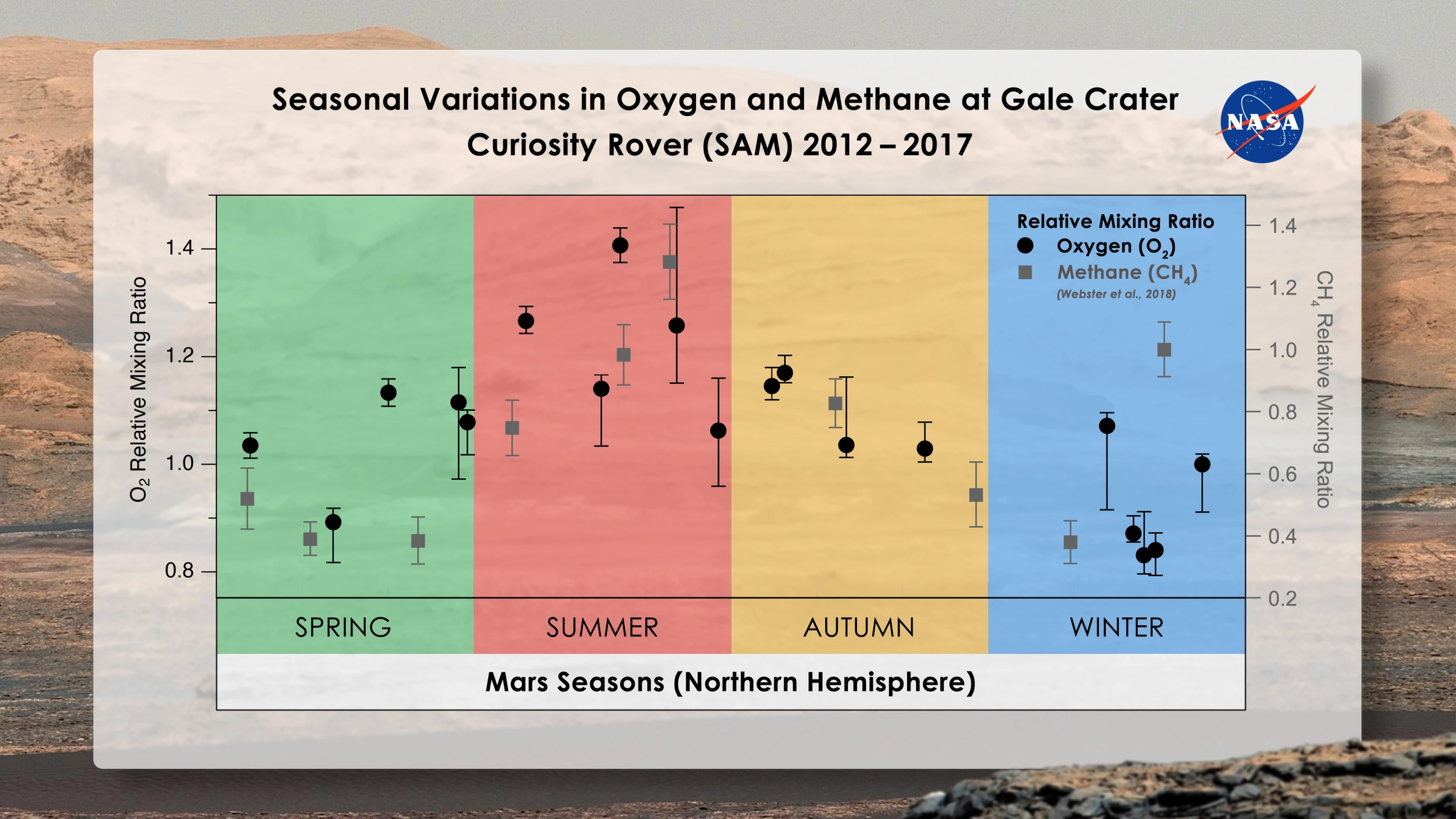The study of Mars is a constant exercise in problem-solving, and NASA scientists have just been served up a doozy. Data from the Curiosity rover positioned within the planet’s Gale Crater has revealed wild seasonal swings in oxygen levels, something mission scientists neither expected or are able to explain.
This perplexing piece of intel comes courtesy of Curiosity’s Sample Analysis at Mars (SAM) tool, an onboard laboratory that has been sucking in the air over the Gale Crater for analysis over the course of three Martian years (almost six Earth years). This has enabled the team to piece together the composition of the planet’s thin atmosphere, with CO2, nitrogen, argon, carbon monoxide and oxygen all part of the mix.
The concentrations of these gases increase and decrease as the weather changes on Mars, as the icy winters lower air pressure across the planet and the summer then raises them again. This leads to regular patterns of concentrations of gases like nitrogen and argon, and in examining the latest data, the scientists expected to see similar trends at play for oxygen.
Only they didn’t. Oxygen concentration rose by around 30 percent more in the Martian spring and summer than the scientists expected, and dipped below expectations in the winter. This pattern then repeated each season but with slightly different amounts of oxygen added to the atmosphere each time. The team was so confounded by the data that they triple-checked the spectrometer instrument in question to make sure it was producing accurate readings of the gases.

“The first time we saw that, it was just mind boggling,” says Sushil Atreya, professor of climate and space sciences at the University of Michigan in Ann Arbor and author of the paper describing the discovery.
There are parallels between this and another Martian mystery to stump planetary scientists recently, massive seasonal spikes in atmospheric methane. Like the oxygen, these increases occur as a repeating pattern, and like oxygen, they differ slightly in how much methane they add to the atmosphere.
“We’re struggling to explain this,” says Melissa Trainer, a planetary scientist at NASA’s Goddard Space Flight Center in Greenbelt, Maryland who led this research. “The fact that the oxygen behavior isn’t perfectly repeatable every season makes us think that it’s not an issue that has to do with atmospheric dynamics. It has to be some chemical source and sink that we can’t yet account for.”
The methane spikes were discovered earlier in the year, with scientists still searching for answers as to why they occur. The discovery that oxygen can behave in the same way provides them with a clue, however, suggesting that they could be driven by the same chemical reactions.
“We’re beginning to see this tantalizing correlation between methane and oxygen for a good part of the Mars year,” Atreya says. “I think there’s something to it. I just don’t have the answers yet. Nobody does.”
They might not have the answers yet, but they have do have some ideas. Martian soil is known to contain rich quantities of oxygen in the form of other compounds, so there is the possibility that certain springtime conditions could bring about huge releases from the surface. The next steps are to work out what this process could be.
“This is the first time where we’re seeing this interesting behavior over multiple years. We don’t totally understand it,” says Melissa Trainer, a planetary scientist at NASA and leader of the study. “For me, this is an open call to all the smart people out there who are interested in this: See what you can come up with.”
The team has published its research in the Journal of Geophysical Research: Planets.
Source: NASA





